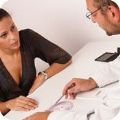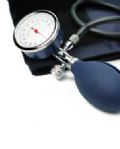PMS. Three little letters that spell dread and discomfort for millions of women every month. It is reported that more than half and perhaps as many as 85 percent of all women experience discomfort related to menstruation, common referred to as Premenstrual Syndrome. In this article we'll explore how your diet (and some nutritional changes) can help you eat to beat monthly PMS symptoms.
What is Premenstrual Syndrome?
Premenstrual Syndrome (PMS) is the name for a group of symptoms that begin 7-14 days before your period (menstruation). The symptoms include a variety of physical and psychological symptoms and usually stop soon after your period starts.
While the exact cause of PMS is unknown, it seems to be closely related to the fluctuating levels of hormones, including estrogen and progesterone. Some women may be more sensitive than others to changing hormone levels during the menstrual cycle. Stress and emotional problems do not seem to cause PMS, but they may make it worse.
Signs and symptoms of PMS
Symptoms vary from one woman to another, but the most common physical and emotional symptoms include:
|
Anger
Anxiety
Appetite changes
Acne
Backache
Bloating
Breast swelling
|
Breast tenderness
Constipation
Crying spells
Depression
Diarrhea
Difficulty sleeping
Fatigue
|
Fluid retention
Food cravings
Headache
Insomnia
Irritability
Joint and muscle pain
Memory problems
|
Mood swings
Overeating
Swollen hands or feet
Tension
Trouble concentrating
Upset stomach
Weight gain
|
While 85 percent of menstruating women experience some of these symptoms, only 3 percent to 8 percent experience a severe form of PMS called Premenstrual Dysphoric Disorder (PMDD). PMDD symptoms are severe enough to either disrupt women's personal relationships or interfere with their normal work and home responsibilities.
Eat to Beat PMS
There is no cure for PMS, but healthy lifestyle habits may help reduce symptoms. Here are 9 eating tips that I recommend for women who want to prevent or reduce their PMS symptoms:
-
Enjoy 4-6 smaller meals throughout the day to reduce bloating and feelings of fullness.
-
Limit your consumption of salty foods and sodium to reduce fluid retention and bloating. Use your Nutrition Tracker to monitor sodium intake, aiming for 2,400 milligrams or less each day.
-
Select foods high in complex carbohydrates and fiber, such as whole grains, brown rice, fruits, vegetables, beans, legumes and lentils. According to the American College of Obstetricians and Gynecologists, these foods may improve mood and reduce cravings.
-
Limit your intake of highly refined and processed carbohydrates such as chips, crackers, and snack foods. These foods can trigger overeating and upset your digestive system.
-
Limit the amount of sweets (candy, cake, cookies, breakfast pastries, pie, jams, jellies, and soda) in your diet. These can cause rapid fluctuations in blood sugar that contribute to moodiness and irritability.
-
Choose calcium rich foods and get at least 1,000-1,200 milligrams daily. Calcium is a key nutrient for women anyway, but it has also been shown to ease depression, moodiness, water retention and PMS pain. For more ways to boost calcium intake check out these dairy-free sources.
-
Avoid or limit caffeine consumption to decrease feelings of tension, anxiety, and irritability prevent breast tenderness.
-
Avoid alcohol to help with feelings of depression and moodiness. One study published in the British Journal of Obstetrics and Gynecology also found that regular alcohol consumption increased length of and severity of cramps in women who experience cramps during PMS.
-
Discuss with your doctor the benefits of taking a multivitamin-mineral supplement.
In addition to dietary changes, the following lifestyle habits can also help women who experience PMS.
-
Exercise can help improve your overall health and alleviate symptoms like fatigue and depression. Engage in at least 30 minutes of moderate exercise every day (or most days of the week). Learn more about exercise and your period.
-
Get enough sleep. Try to get at least 7-8 hours of sleep each night.
-
Find healthy ways to cope with stress, like talking to friends, writing in a journal, or practicing yoga.
-
Schedule stressful events for the week after your period.
-
Don't smoke. PMS symptoms appear to be worse in women who smoke.
-
Stick to a routine so that you eat, wake up, go to bed and exercise at the same time each day.
If dietary and lifestyle changes don't help control your symptoms within two to three cycles, or if PMS seriously affects your health and daily activities, visit your health care provider. There are no unique physical or laboratory tests to diagnose premenstrual syndrome, but your doctor can examine you and perform test to rule out other problems. He or she may ask you to keep track of your symptoms for several cycles, too. Your health care provider may suggest various treatment options, including medications such as aspirin, acetaminophen, ibuprofen, ketoprofen, naproxen, diuretics, antidepressants, nonsteroidal anti-inflammatory drugs, and/or oral contraceptives (birth control pills). You may need to try more than one medicine to find the treatment that works best for you.
Why suffer through PMS every month if you don't have to? Try to incorporate these habits to improve your overall health and well-being and feel your best all month long.
|


.jpg)





